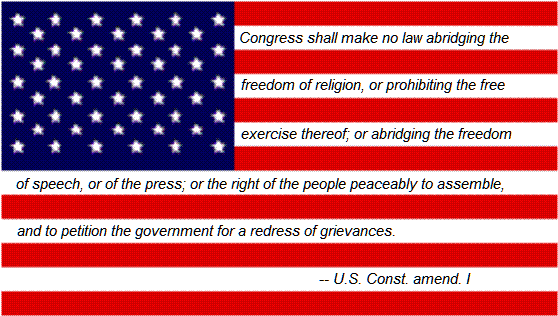Ted Frank has posted some
observations on a
$30 million malpractice verdict in Philadelphia, and on what the verdict may imply about strategies for "liability reform." He notes that even caps on non-economic damages would not have reduced the verdict below $15 million, and concludes that "[r]eal reform needs to be aimed at improving the quality of the evidence jurors hear and taking reasonable judgment calls out of malpractice."
In that vein, Frank wonders aloud about why malpractice law doesn't follow a standard akin to the business judgment rule:
[O]ne immediately recognizes problems when juries are asked to decide between two experts about the appropriate treatment course. If reasonable doctors disagree, both treatment courses should be considered non-negligent. Otherwise, one jury could find treatment A negligent, while another jury can find the alternative treatment negligent, and doctors are effectively blamed for any bad result. Yes, I know no court adopts a "business judgment" rule for medical malpractice, though this sort of discretion is given attorneys in legal malpractice cases. But why not?
Those who need a brief refresher course on the business judgment rule (as we did) may want to take a peek at Professor Bainbridge's 2003 paper, "
The Business Judgment Rule as Abstention Doctrine." On doing so, the reader will learn (or remember) that some commentators consider the business judgment rule itself to afford inadequate protection for corporate directors, at least as some courts apply the doctrine. Bainbridge identifies two competing conceptions of the business judgment rule in the case law. In one, the rule is seen as a special standard of liability, under which directors may not be held liable for merely negligent business decisions, but only for decisions breaching some more forgiving standard of care (whose precise nature and contours remain subject to considerable indeterminacy and debate). In the other, the rule is seen as one of judicial abstention
. The latter conception may be the more director-friendly, as it prevents more controversies from reaching the trier of fact.
Frank's post is presumably meant to spark thought, not to provide a finished solution, and so Frank doesn't spell out the specific features that a malpractice analogue to the business judgment rule should have. A clue may be afforded, however, by his ideas about what should happen if two "reasonable doctors" could differ on the appropriate course of treatment. In that circumstance, Frank suggests, either course of treatment should be considered non-negligent.
We say that Ted Frank's language affords only a "clue" because some of the complexities may be obscured in his shorthand formulation. To tease them out, let's focus on the phrase "reasonable doctors." The reasonableness requirement, we take it, would actually apply not to the doctors considered as persons, but to their opinions on the appropriate course of treatment. On that interpretation, Ted Frank's proposal could come in any of at least three flavors:
- If the jury considers the course of treatment pursued by the malpractice defendant to have been one "reasonable" choice among the alternatives, then the jury should render a verdict for the defendant on liability, even though the defendant's "reasonable" acts may not have conformed to the standard of care normally offered in the relevant community.
- If a malpractice defendant can call a witness whose exculpatory opinion on breach of duty is sufficiently "reasonable" to satisfy prevailing standards for the admissibility for expert testimony, then judgment should be rendered for the defendant, even if the claimant produces an expert with an admissible opinion to the opposite effect.
- If a court should determine, on weighing the facts itself, that the malpractice defendant selected a course of treatment within the range of "reasonable" options, then it should dismiss the suit.
It seems fair to assume that Frank would not propose the first variant, which would essentially detach the jury's appraisal of "reasonableness" from any obvious objective moorings, with the probable result of increasing rather than reducing medical malpractice exposure. The second variant seemingly amounts to a proposal that the existence of genuine factual dispute on the blameworthiness of the defendant's conduct should result in dismissal of the claims. That idea, to be candid, makes our heads spin, and we'd have to take another look at the Seventh Amendment before commenting much further. But perhaps the third variant is closest to what Frank is proposing, possibly in tandem with a more provider-tolerant "reasonableness" standard. Such a regime might be seen as procedurally analogous to the "abstention" model for the business judgment rule.
There may be Seventh Amendment issues with the third variant too, but let's leave those aside for now. What interests us more, at the moment, is whether any of these three variants could be tied to some acceptable standard for "reasonableness" that would represent a clear improvement on the current regime from the standpoint of promoting consistent results that could also be accepted as falling within the broad limits of fairness and justice.1
We're skeptical. It's far from obvious, in particular, that merely adopting a more mistake-tolerant duty of care would turn the trick. Suppose, to pick an extreme example, that reasonableness were redefined, in the malpractice context, to require only an absence of "intentional or reckless" misconduct (as may be the actual agenda of some). In the first "reform" variant under consideration, the jury would still decide the issue in cases of genuine dispute, and so the possibility of successive verdicts imposing inconsistent standards of treatment would remain.2 In the second variant, the revised liability standard might put something of a dent in the supply curve for plaintiff-friendly malpractice experts. But under any liability standard, the second variant seemingly poses an unacceptably high risk of increasing variability of outcomes, because it would lash liability determinations to the tempest-tossed mast of discretionary evidentiary rulings (although admittedly, Ted Frank wants to "reform" those too). Under the third variant, no doubt, a new provider-friendly duty of care would do something to reduce the number of jury trials, and therefore, perhaps, to reduce, by brute statistical force, the risk that successive verdicts would impose inconsistent standards of care. But the third variant also implies a high level of trust in the judiciary's capacity to develop, through the process of stare decisis, a consistent and coherent body of decisions supplying a working definition for the liability standard. If that process hasn't worked to tort reformers' satisfaction in producing consistent and acceptable results under the current negligence regime, there may be dubious grounds for optimism that the situation would improve with a redo.
Concededly, any measure that reduced the volume of jury trials in malpractice cases would tend, ceteris paribus, to increase the domain of safely liability-free provider conduct -- just as reducing the number of highway patrolmen improves the odds of avoiding a speeding ticket. Our point is that changing to a stricter or more lenient standard won't necessarily do much to make inconsistent outcomes go away. And if the mere memory or possibility of traumatic outcomes is as powerful a precipitant of insurer agoraphobia as Ted Frank seems to think, we might still end up living in a world of PTSD-governed premiums.
Meanwhile, in response to Frank's question why no court has adopted the business judgment rule in the malpractice setting, we wonder if it doesn't have something to do with an argument in favor of the business judgment rule we seem to remember hearing, to the effect that efficient markets make litigious regulation of corporate behavior largely superfluous. Corporate officers and directors have an inherent incentive to make good business decisions, because their economic fortunes are tied to those of their companies -- or so goes the argument. Malpractice exposure apart, what is the parallel economic incentive for health care providers?
____________________
1 The caveat about outcomes falling acceptably within the bounds of fairness and justice is a necessary one. If consistency were the only goal, it would be trivially simple to design a foolproof system -- e.g., one in which all malpractice plaintiffs automatically win, or one in which all malpractice plaintiffs automatically lose.
2 As judicial interpretation of the new liability standard developed, a greater number of cases might be taken from the jury on summary judgment, in which event the statistical risk of successive verdicts imposing incompatible standards of conduct might be reduced. If that is what Ted Frank has in mind, then the first variant, in combination with a new and more provider-friendly standard for liability, would begin to share many features with the third.



